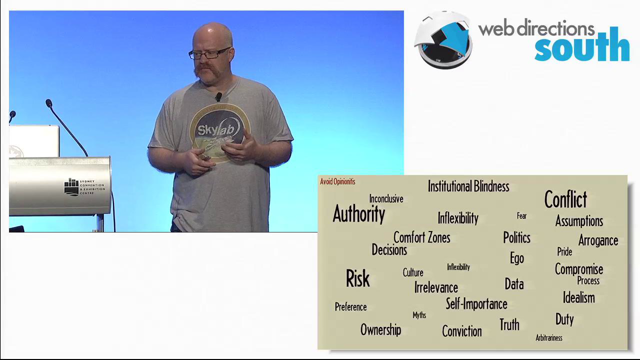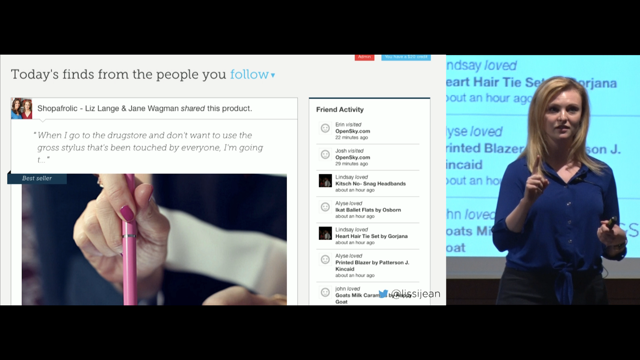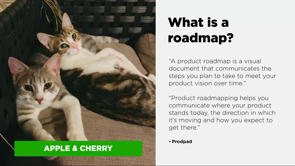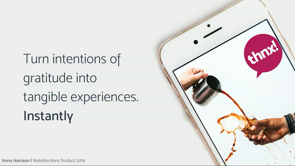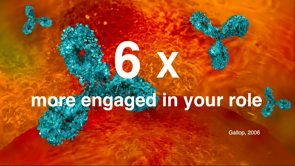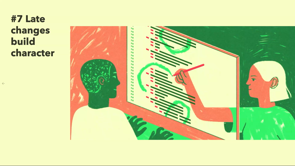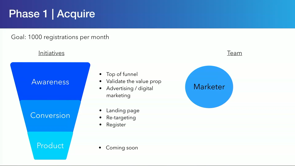Cognitive Biases – Friend or Foe to Product Management?
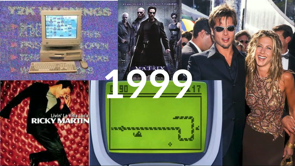
(bouncy music) - Hi guys.
So I'm a little nervous, this is my first time speaking at a conference of this size.
So I thought I'd start of with a traumatic childhood memory, that should set things off.
(audience laughs) So the year is 1999, we're all buzzing about they Y2K bug.
The Matrix has come out.
We're all Living La Vida Loca with Ricky Martin. Playing snakes on out 3315's and Brad Pitt and Jennifer Anderson made they're debut as a couple at the Emmy Awards.
So it's 1999.
And this is my dad.
He's not like other dad's, he's a cool dad.
You can tell by the Beatles shirt.
And this is my house.
And in this house there was a terrible smell, it was horrific.
I can still remember it to this day.
And my dad had smelt that smell before, he knew exactly what it was.
And it was a dead rat and it was in the wall.
So having faced this problem before, my dad got to work, he got a drill and tried to drill a little whole in the wall to peep and try and find this rat.
He took his hacksaw out and tried to kind of saw a hole through there. Until eventually he took his axe to the wall. But there was no rat to be found, he couldn't...
It was bizarre, he had no idea why there wasn't a rat there. Meanwhile my little brother, he looks very cute in this outfit.
He's 26 years old now but he still has that outfit. (audience laughs) Had painted an egg for Easter about six months prior but what he'd forgotten to do is remove the yolk and the egg white.
And this beautiful little egg had sat in our lounge room for six months, rotting away and creating this terrible smell. But why didn't my dad find this egg? It was bizarre to me.
Until 20 years later, I'm sitting in my economics exam.
Sorry economics lecture, I'm doing my MBA at the moment.
And I was learning about behavioural economics in cognitive bias.
And the first thing I thought is, holy shit this is so applicable to product management. I've got to tell people.
And the next thing was, Ahhh so that's why dad couldn't find the egg. He was suffering from a confirmation bias.
So what is cognitive bias? Trusty Wikipedia tells us that it's a systematic pattern of deviation from norm or rationality in judgement .
But I like to think of it as we're all really rational creatures.
And how does this impact us as product managers? Well, by nature we're not as objective, logical and scientific as we'd like to be and this can lead to some pretty poor outcomes. And also, by understanding these and our users own product biases, we can create better products.
So it's kind of a threat and an opportunity for us. So Nicole touched on this but I've believe repetition is the key to learning that's why religion is so effective is confirmation bias.
(audience chuckles) And one quote I like around this is that, "Smart people believe weird things "because they're skilled at defending beliefs "that they arrived at for non-smart reasons". And we believe in some pretty wackadoodle shit, so we believe in your UFO's, crystals, we base our romantic features on astrology. And these are all things that product managers I know are into and I might be into one of these but I'm not gonna tell you which one.
(audience chuckles) So common traps us product managers can fall into with confirmation bias.
So we only interview users we like, those users that tell us what we want to hear and we create this little halo around ourselves of users. We might be talking to users for a week but if we're only speaking to users we like, we're confirming our existing point of view. The next is, we're finding just one metric to support our view. So you can find those little vanity metrics that support your case or just prove your case but really it's not creating the full picture for you. And we accidentally coach people through user testing. So those are some common confirmation bias traps we can fall into.
But how can we fix this? Well, one is sampling well.
So in business analytics you learn about how you can sample well when you're doing user research to ensure that you're not creating those halos, around yourself of yes men.
Asking the five ways so really, really interrogating the problem, drilling down into it.
Having healthy conflict and scepticism within the team, this is something I struggle with, being an optimist and hiring a lot of optimists so really creating that culture.
And embrace conflicting data and opinions when building. Ace.
So the next exciting one I wanted to dig into is, you can tell I'm really passionate about this. I'm not an expert but very interested in this so sunk cost fallacy.
So this is the tendency of people to irrationally follow through on an activity that has not being meeting their expectations because of the time and money they've already spent on it. So an easy example of this is, five dollars has been invested in my project, a further $10 needs to be invested to complete this project otherwise my five dollars will be lost, therefore the $10 investment is completely justified. So the sunk cost fallacy is why we finish meals we don't like, why we stay in relationships that we've invested so much in even though they don't serve us well and why I sat through King Kong.
(audience laughs) So this movie is 3.5 hours long, it's really shitty but you bet I finished it. So this also speaks to Nicole's talk, know when to quit.
So know when to cut your losses and know when to quit, to avoid the sunk cost fallacy.
The next one I wanted to speak about is opportunity costs. So this happens a lot in my team, contrary to the economic way of thinking.
People seem to consistently think that we have unlimited resources, unlimited time because we're all on salaries, right? But really, when everyone gets a meeting a lot of our time and resources get eaten away.
So this happens with extroverted managers, they schedule meeting after meeting, after meeting and everyone feels great but we actually haven't achieved anything.
So a way to avoid this is to track where our time and resources are going but even further than that, track what value we're delivering from these investments. Daily, weekly, monthly.
The other trap I wanted to talk about is survivorship bias. So survivorship bias is overemphasising the data that survived.
Survivorship bias narrows your field of vision so you're focusing on incomplete information and ignoring key evidence from failures or cases that don't make it through.
So who are the survivors? Well, your existing users are the survivors. We need to be interviewing users who churn, users who never signed up and users who our sales team forgot to speak to, to get a really rich picture of the environment we're working within.
So I've spoken about the traps we can fall into but what about the positive side of things? How can we use cognitive bias to build better products? And I say ethically here because you (chuckles) have to do it ethically. So one part where I found that you can use this is pricing. So one of these is the demotivating nature of choice, so presenting users with too many choices can actually demotivate people. And there's a famous case study that (murmurs) conducted about jam.
People were presented with 26 types of jam but in the study if they reduced these options to just six, people were 10 times more likely to purchase a jar of jam than when they were presented with the 26 options. And you can see this, Ooh that's not very good styling.
You can see this with lots of customers, with their pricing tier.
So usually offering kind of, three pricing tiers here.
But this might not just be because of the demotivating nature of choice, they may also be using the decoy effect which is when people tend to change preferences between two options when they're asymmetrically weighted.
For example I'm at the movies and I want a soft drink, there's a small for $4.50 and there's a medium for $7.
The small satisfies my needs, my utility to get a nice little drink so I'll probably pick that because it satisfies that need at the lowest cost.
But when we introduce a third decoy option, my brain goes psycho, I become irrational and the decoy changes me into a irrational human who desires their medium size now.
And I do this all the time, it's very bizarre.
And you can see Apple doing this as well so lots of tech companies use the decoy effect to drive you to the mid option.
The next one I wanted to talk about is the pain of paying. So this one is really easy to explain.
I'm at the coffee shop, I'm so excited, there's a long line but I'm gonna get my beans, I patiently wait in line, I get to the counter and there's a cash only sign. I carry a little purse with me and I don't carry cash and there's no ATM by so I feel real pain when I have to slink out of that coffee shop.
This is the pain of paying in action and people understandably avoid these types of pain. So how can we reduce the pain of paying? Well we can accept all common payment methods, we can avoid separate surcharges by rolling up shipping costs and additional fees into the purchase price and we can reduce the frequency of payments where logical. And the last piece where we can use cognitive bias to enhance our products, that I wanted to touch on, there's so many more, is customer experience.
So one piece is reciprocation.
So this is adorebeauty.com, I love this platform, I love their range of products.
It's a Melbourne-based business.
But why I buy from them all the time is because with every order they send me, they send me this little Tim Tam.
And because I get this gift every time, I'm almost compelled to shop with them again, I have to pay back the favour.
So you see this in product, you can see free gifts with purchase, you can say, "Oh I hand over my email I get a lovely white paper", I shop with you I get these points.
so reciprocation is a really powerful tool in cognitive bias to build into your products where you can. The next thing I wanted to talk about is user experience. So user experience obviously is a great place to build in cognitive bias.
So how long do we think it takes to form a habit? Previously I had thought it was just a month, 21 days. But a study came out in 2009 that said that habits actually take 66 days to become a habit so if we're rolling out products with these 30-day product trials, we're actually not giving our customers an opportunity to form this habit and become really sticky with our product.
The other exciting one is the IKEA effect.
And this is where people place a disproportionately high value on products that they partially create.
So in 2012 some guys conducted a study where they got one group of people to build a basic IKEA box and another group of people didn't get to build the box, when they got all customers to go pay for the product at the counter, the people who built the box were actually willing to pay a much higher price than those who didn't build the box.
Which indicates that people place a really high value on things they create.
So we can do this in product by allowing our users to create or customise their product experiences and then they value the product more.
But as product managers we also have to be wary of the IKEA effect ourselves because we can place disproportionately high value on products we create, ideas we have and projects we work on.
So what's the take away from this? If there's one thing that behavioural economics teaches us is that we're all beautifully irrational creatures and our users are beautifully irrational too. But there's also an opportunity for us to build great product experiences by taking advantage of this, unless we fall victim to our own irrationality first. So if you'd like to learn more, "Influence of Psychology of Persuasion" is a great book that I've read.
It was written in 1984 so some of the language doesn't really stand the test of time but it's still a great book.
And the classic, "Thinking Fast and Slow".
Thank you very much.
(bouncy music)
